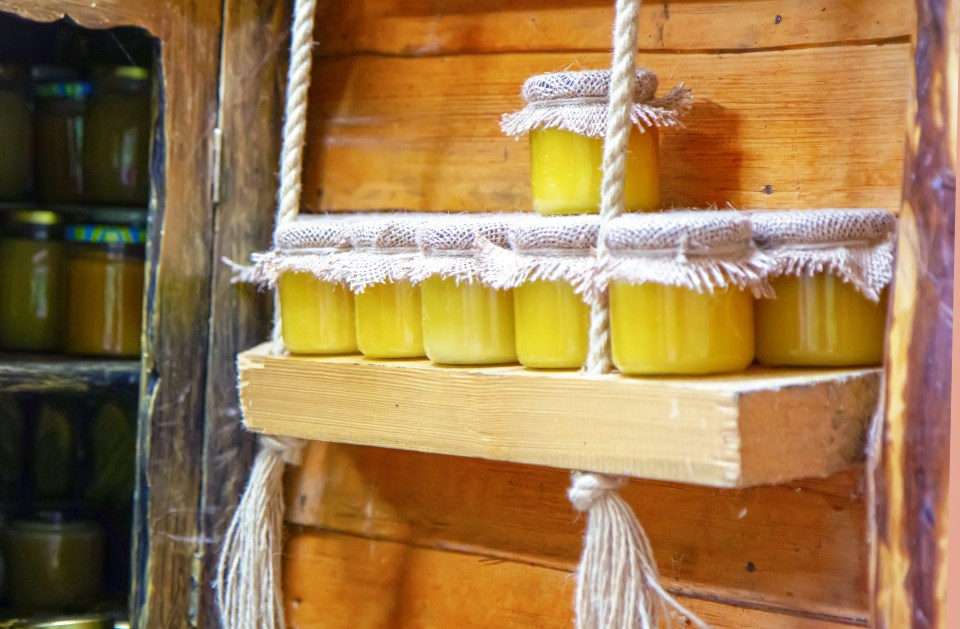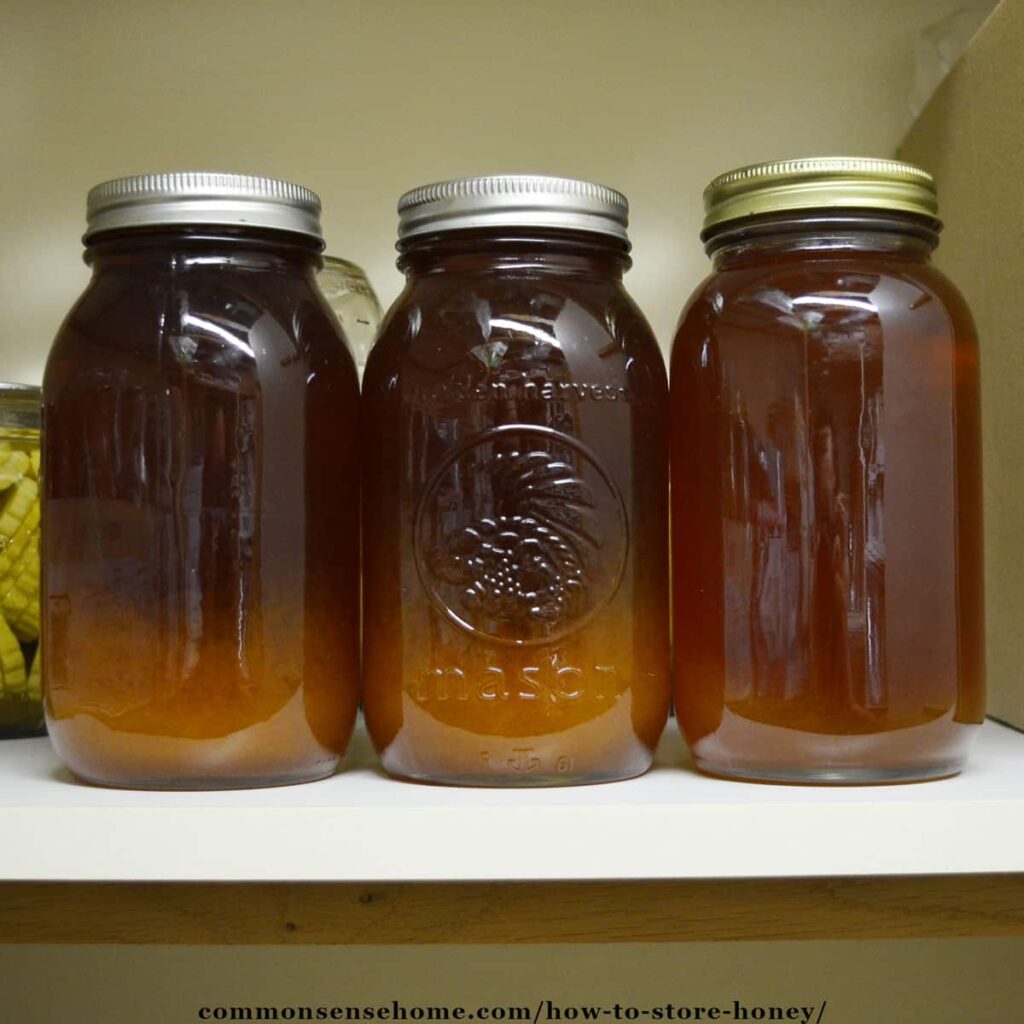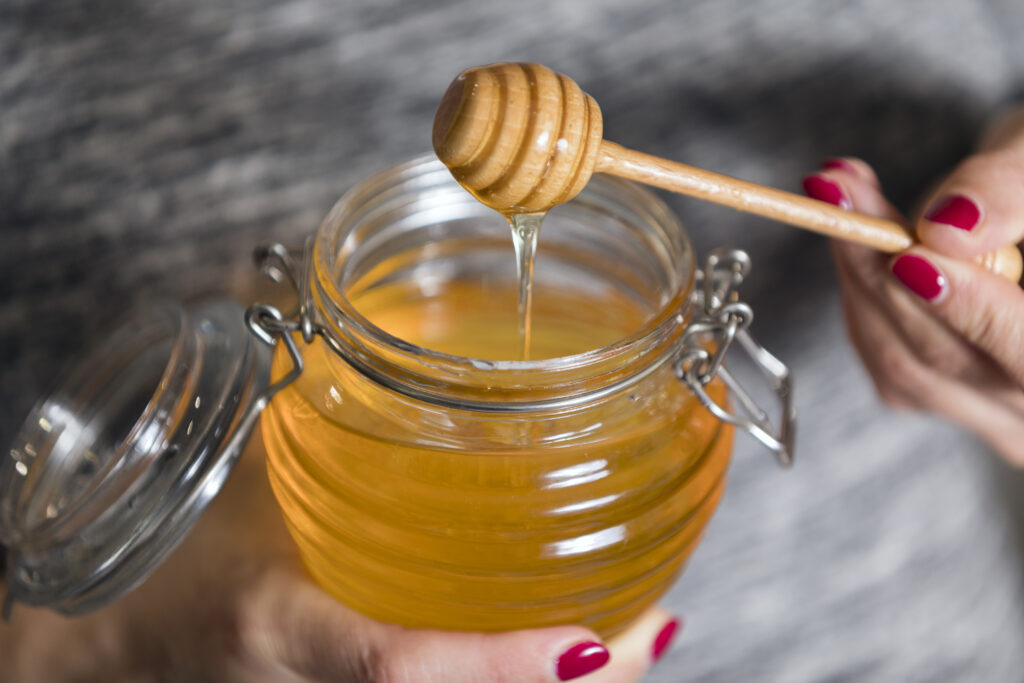
Looking to keep your honey fresh and delicious for as long as possible? Look no further! In this article, you’ll discover the best containers that will help you store your honey like a pro. From glass jars to plastic squeeze bottles, we’ll explore the top options to ensure your honey stays fresh, tasty, and ready to enjoy. So grab a cup of tea, sit back, and let’s dive into the wonderful world of honey storage!
Benefits of Storing Honey Properly
Honey is a delicious and nutritious natural sweetener that can be enjoyed in a variety of ways. However, to fully appreciate its flavor and maintain its quality, it is essential to store honey properly. Here are the key benefits of storing honey correctly:
Prevents Crystallization
One of the main advantages of storing honey properly is that it helps prevent crystallization. Crystallization occurs when the sugars in honey start forming crystals, resulting in a grainy texture. By storing honey in the right container, you can slow down this process and keep your honey smooth and spreadable for a longer period of time.
Preserves Flavor and Aroma
Properly storing honey also helps preserve its flavor and aroma. Honey is well-known for its distinct taste and fragrance, which can be altered if not stored correctly. By choosing the right container and storing the honey in optimal conditions, you can ensure that it retains its delicious taste and enticing aroma.
Maintains Nutritional Value
Another important benefit of storing honey properly is that it helps maintain its nutritional value. Honey is not only a natural sweetener but also a source of essential nutrients and antioxidants. The way honey is stored can impact its nutritional profile. By storing honey in a suitable container, you can ensure that it retains its beneficial properties and remains a wholesome addition to your diet.
Choosing the Right Container for Honey Storage
Now that we understand the benefits of storing honey properly, let’s explore the different types of containers that are ideal for honey storage:
Glass Jars
Glass jars are a popular choice for storing honey due to their excellent preservation properties. They provide an airtight seal and offer protection against external factors that can affect the quality of honey. Glass jars also ensure that the honey remains visible, allowing you to appreciate its color and texture. Additionally, glass is a non-reactive material, meaning it won’t impart any unwanted flavors or chemicals into the honey.
Food-Grade Plastic Containers
Food-grade plastic containers are another option for honey storage. Look for containers specifically designed for food storage, as they are made from high-quality plastic that is safe for storing honey. These containers are lightweight, durable, and often come with tight-fitting lids to maintain an airtight seal. However, it is important to ensure that the plastic is food-grade to minimize any potential chemicals leaching into the honey.
Stainless Steel Containers
Stainless steel containers are a less common but effective choice for honey storage. They are known for their durability and non-reactive nature. Stainless steel containers also offer excellent protection against sunlight and heat, which can speed up the crystallization process. Just make sure the container has an airtight seal to prevent moisture and air from affecting the honey’s quality.

Factors to Consider When Selecting a Container
When selecting a container for honey storage, consider the following factors:
Airtight Seal
One of the most crucial factors to consider is the container’s ability to provide an airtight seal. Honey can absorb moisture from the air, leading to fermentation and spoilage. Therefore, it is essential to choose a container that creates a tight seal and prevents any moisture or air from entering.
Dark or Tinted Material
Honey is sensitive to sunlight and can lose its flavor and nutritional value when exposed to excessive light. Look for containers made from dark or tinted materials, such as amber glass or opaque plastic. These materials help block out harmful UV rays and preserve the honey’s quality for a longer time.
Non-reactive Material
Since honey is slightly acidic, it is important to choose a container made from a non-reactive material. Reactive materials, such as certain metals or low-quality plastics, can interact with the honey and affect its taste. Opt for containers made from glass, stainless steel, or food-grade plastic to ensure the honey remains pure and unaltered.
Glass Jars for Honey Storage
Glass jars are a popular and widely used option for storing honey. Here’s what you need to know about using glass jars for honey storage:
Types of Glass Jars to Use
When selecting glass jars for honey storage, choose those with a wide mouth for easy access. Mason jars are a common choice due to their durable construction and reliable airtight seals. Additionally, consider opting for jars with a capacity that suits your honey consumption needs.
Advantages of Glass Jars for Honey Storage
Glass jars offer several advantages for storing honey. Firstly, they provide an airtight seal, preventing moisture and air from reaching the honey. Secondly, glass jars are non-reactive, ensuring that the honey’s taste and quality remain unchanged. Lastly, glass jars allow for easy visibility, allowing you to appreciate the honey’s natural color and texture.
How to Store Honey in Glass Jars
To store honey in glass jars, start by ensuring the jars are clean and dry. Fill the jars with honey, leaving some headspace at the top to account for expansion. Seal the jars tightly to create an airtight seal. Store the jars in a cool, dark place away from direct sunlight and fluctuating temperatures to maintain the honey’s freshness and quality.

Food-Grade Plastic Containers for Honey Storage
Food-grade plastic containers are an alternative option for storing honey. Here’s what you need to know about using food-grade plastic containers for honey storage:
Types of Plastic Containers to Use
When selecting food-grade plastic containers for honey storage, look for those specifically designed for food storage. These containers are made from high-quality plastics that are safe for storing consumables. Ensure that the containers have tight-fitting lids to maintain an airtight seal and protect the honey from unwanted contaminants.
Advantages of Food-Grade Plastic Containers
Food-grade plastic containers offer several advantages for honey storage. They are lightweight, making them easy to handle and transport. Additionally, plastic containers are durable and resistant to breakage, making them a convenient option for those seeking a portable storage solution. They are also often transparent or semi-transparent, allowing you to see the honey inside while still protecting it from harmful light exposure.
How to Store Honey in Plastic Containers
To store honey in food-grade plastic containers, start by cleaning and drying the containers thoroughly. Fill the containers with honey, leaving some headspace for expansion. Ensure the lids are secured tightly to maintain an airtight seal. Store the containers in a cool, dark place away from direct sunlight and extreme temperatures to keep the honey fresh and flavorful.
Stainless Steel Containers for Honey Storage
Stainless steel containers are a less commonly used option for honey storage, but they offer unique advantages. Here’s what you need to know about using stainless steel containers for honey storage:
Advantages of Stainless Steel Containers
Stainless steel containers offer exceptional durability and longevity. They are resistant to rust and corrosion, ensuring that your honey remains safe and free from any metal contamination. Stainless steel containers also provide excellent protection against sunlight and heat, which can accelerate the crystallization process. Furthermore, they are non-reactive, meaning they won’t interact with the honey and affect its taste or quality.
Precautions When Using Stainless Steel Containers
While stainless steel containers offer numerous benefits, there are a few precautions to keep in mind. Avoid using containers with any coatings or linings that may contain harmful chemicals. Also, make sure the containers have an airtight seal to prevent any moisture or air from compromising the honey’s freshness.
How to Store Honey in Stainless Steel Containers
To store honey in stainless steel containers, start by cleaning and drying the containers thoroughly. Fill the containers with honey, leaving some headspace for expansion. Ensure the containers are tightly sealed to maintain an airtight environment. Store the containers in a cool, dark place away from direct sunlight and extreme temperatures to preserve the honey’s natural properties.

Other Options for Honey Storage
While glass jars, food-grade plastic containers, and stainless steel containers are the most commonly used options for honey storage, there are a few alternative choices worth considering:
Ceramic Containers
Ceramic containers can be an aesthetically pleasing option for honey storage. They come in various shapes and designs, adding a touch of elegance to your kitchen or pantry. However, it is important to ensure that the ceramic containers are food-grade and do not contain any lead or other harmful substances that may leach into the honey.
Clay Pots
Clay pots, often used in traditional honey storage methods, can also be a viable option. These pots allow for natural airflow, which can help slow down the crystallization process. However, it is crucial to select pots that have been specifically designed for storing food and do not contain any harmful chemicals or residues.
Silicone-Based Containers
Silicone-based containers are a more modern option for honey storage. They are flexible, lightweight, and often come with airtight lids. Silicone containers are resistant to high temperatures and do not react with the honey, ensuring that it remains free from any unwanted flavors. However, it is important to choose food-grade silicone containers to guarantee the safety of the honey.
Storing Honey in Bulk
If you have a large quantity of honey to store, it is essential to consider bulk honey storage methods. Here are a few considerations to keep in mind:
Considerations for Bulk Honey Storage
Bulk honey storage requires extra care to maintain the honey’s quality. Make sure the containers you use are specifically designed for food storage and are capable of holding a large volume of honey. Additionally, consider the overall storage conditions, such as temperature and humidity, to ensure optimal honey preservation.
Using Food-Grade Buckets
Food-grade buckets are a practical choice for bulk honey storage. Look for buckets made from high-quality plastic that is safe for storing food. Ensure the buckets have airtight lids that provide a secure seal to protect the honey from any contaminants.
Transferring Honey to Smaller Containers
If you prefer to store honey in smaller portions for easier access and consumption, consider transferring some of the honey from the bulk container to smaller jars or containers. Choose containers that provide an airtight seal and are suitable for honey storage, such as glass jars or food-grade plastic containers. This way, you can access honey as needed without compromising the quality of the remaining bulk supply.

Caring for Your Honey Containers
Proper care and maintenance of your honey containers are crucial for ensuring the longevity of your honey and preserving its flavor. Here are some key steps to follow:
Proper Cleaning and Drying
Before using a container for honey storage, clean it thoroughly with warm water and mild soap. Rinse it well to remove any traces of soap, as these can affect the taste of the honey. Allow the container to air dry completely before filling it with honey to prevent moisture buildup.
Avoiding Exposure to Heat and Sunlight
Honey containers should be stored in a cool, dark place away from direct sunlight and heat sources. Exposure to heat can accelerate honey crystallization and negatively impact its quality, while sunlight can degrade the honey’s flavor and nutritional properties. Optimal storage conditions help maintain the honey’s freshness and taste.
Periodic Inspection for Damage
Regularly inspect your honey containers for any signs of damage or wear. Check for cracks, leaks, or any other compromises to ensure the containers remain airtight and secure. If you notice any damage, replace the container promptly to prevent any potential spoilage or contamination.
Conclusion
Storing honey properly is essential for preserving its quality, flavor, and nutritional value. Glass jars, food-grade plastic containers, and stainless steel containers are all suitable choices for honey storage, each with its own advantages. Factors such as an airtight seal, dark or tinted material, and non-reactive material should be considered when selecting a container. Additionally, caring for your honey containers through proper cleaning, avoiding heat and sunlight exposure, and periodic inspections will help maintain the honey’s freshness and ensure a delightful culinary experience every time you indulge in the golden sweetness of honey. So, go ahead, store your honey like a pro, and savor its goodness for a long time to come!
